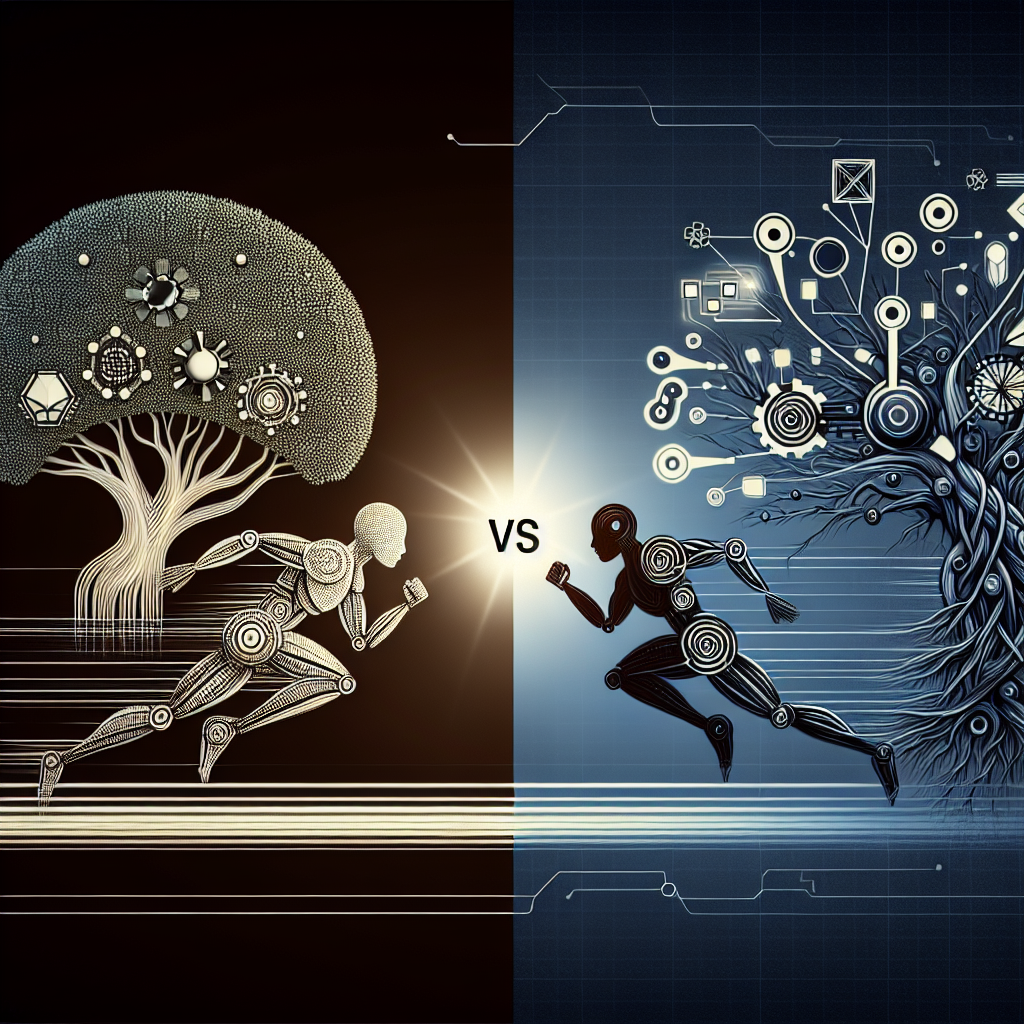In today’s rapidly evolving technological landscape, artificial intelligence (AI) and machine learning (ML) are two of the most talked-about technologies. While they are often used interchangeably, AI and ML are distinct fields that are shaping the future in different ways. In this article, we will explore the differences between AI and ML, their applications, and discuss which technology is leading the way in innovation.
AI vs ML: What’s the Difference?
Artificial intelligence is a broad field that encompasses the development of intelligent systems that can mimic human behavior. AI systems are designed to perform tasks that typically require human intelligence, such as speech recognition, decision-making, and problem-solving. AI systems can be categorized into two types: narrow AI and general AI.
Narrow AI, also known as weak AI, is designed to perform specific tasks within a limited domain. Examples of narrow AI include virtual assistants like Siri and Alexa, recommendation systems like those used by Netflix and Amazon, and autonomous vehicles. Narrow AI systems are designed to excel at specific tasks but lack the general intelligence of humans.
On the other hand, general AI, also known as strong AI, refers to AI systems that possess the ability to understand, learn, and apply knowledge across a wide range of domains. General AI systems have the potential to perform any intellectual task that a human can do. While general AI is still a theoretical concept, researchers are actively working towards its development.
Machine learning, on the other hand, is a subset of AI that focuses on developing algorithms that can learn from data and improve over time without being explicitly programmed. ML algorithms analyze data, identify patterns, and make decisions based on the information they have learned. ML can be further categorized into three types: supervised learning, unsupervised learning, and reinforcement learning.
Supervised learning involves training a model on labeled data, where the correct output is provided to the algorithm during training. The algorithm learns to make predictions based on the input data and the correct output labels. Unsupervised learning, on the other hand, involves training a model on unlabeled data and allowing the algorithm to identify patterns and relationships in the data on its own. Reinforcement learning is a type of ML where an agent learns to take actions in an environment to achieve a specific goal through trial and error.
Applications of AI and ML
AI and ML have a wide range of applications across various industries, including healthcare, finance, retail, and manufacturing. In healthcare, AI and ML are being used to improve diagnosis accuracy, personalize treatment plans, and predict patient outcomes. In finance, AI-powered systems are used for fraud detection, risk assessment, and algorithmic trading. In retail, AI and ML are used for personalized recommendations, inventory management, and customer service. In manufacturing, AI and ML are used for predictive maintenance, quality control, and supply chain optimization.
Which Technology is Leading the Way?
Both AI and ML are driving innovation and transforming industries in significant ways. However, in terms of leading the way, ML is currently at the forefront of technological advancements. ML algorithms are powering AI applications across various domains, enabling machines to learn from data, make decisions, and improve their performance over time. The ability of ML algorithms to analyze large amounts of data and identify patterns has made them indispensable in today’s data-driven world.
AI, on the other hand, is a broader field that encompasses a wide range of technologies, including ML. While AI has the potential to revolutionize industries and transform society, the current focus is on developing practical applications of AI technologies, many of which are powered by ML algorithms. As ML continues to evolve and drive innovation, AI will continue to expand its capabilities and push the boundaries of what is possible.
FAQs
Q: What are some real-world examples of AI and ML applications?
A: Some real-world examples of AI and ML applications include virtual assistants like Siri and Alexa, facial recognition systems, recommendation engines used by Netflix and Amazon, self-driving cars, and predictive maintenance systems in manufacturing.
Q: How are AI and ML different from traditional software development?
A: AI and ML differ from traditional software development in that they involve teaching machines to learn from data and make decisions on their own, rather than being explicitly programmed to perform specific tasks. AI and ML algorithms are designed to improve their performance over time through experience and exposure to new data.
Q: What are some challenges facing AI and ML technologies?
A: Some challenges facing AI and ML technologies include bias in algorithms, data privacy concerns, lack of interpretability in ML models, and the need for robust cybersecurity measures to protect AI systems from attacks. Researchers and practitioners are actively working to address these challenges and develop ethical and transparent AI systems.
In conclusion, both AI and ML are driving innovation and transforming industries in significant ways. While ML is currently leading the way in technological advancements, AI continues to push the boundaries of what is possible and has the potential to revolutionize society. As AI and ML technologies continue to evolve, we can expect to see further advancements in AI applications and the development of more intelligent and autonomous systems.

